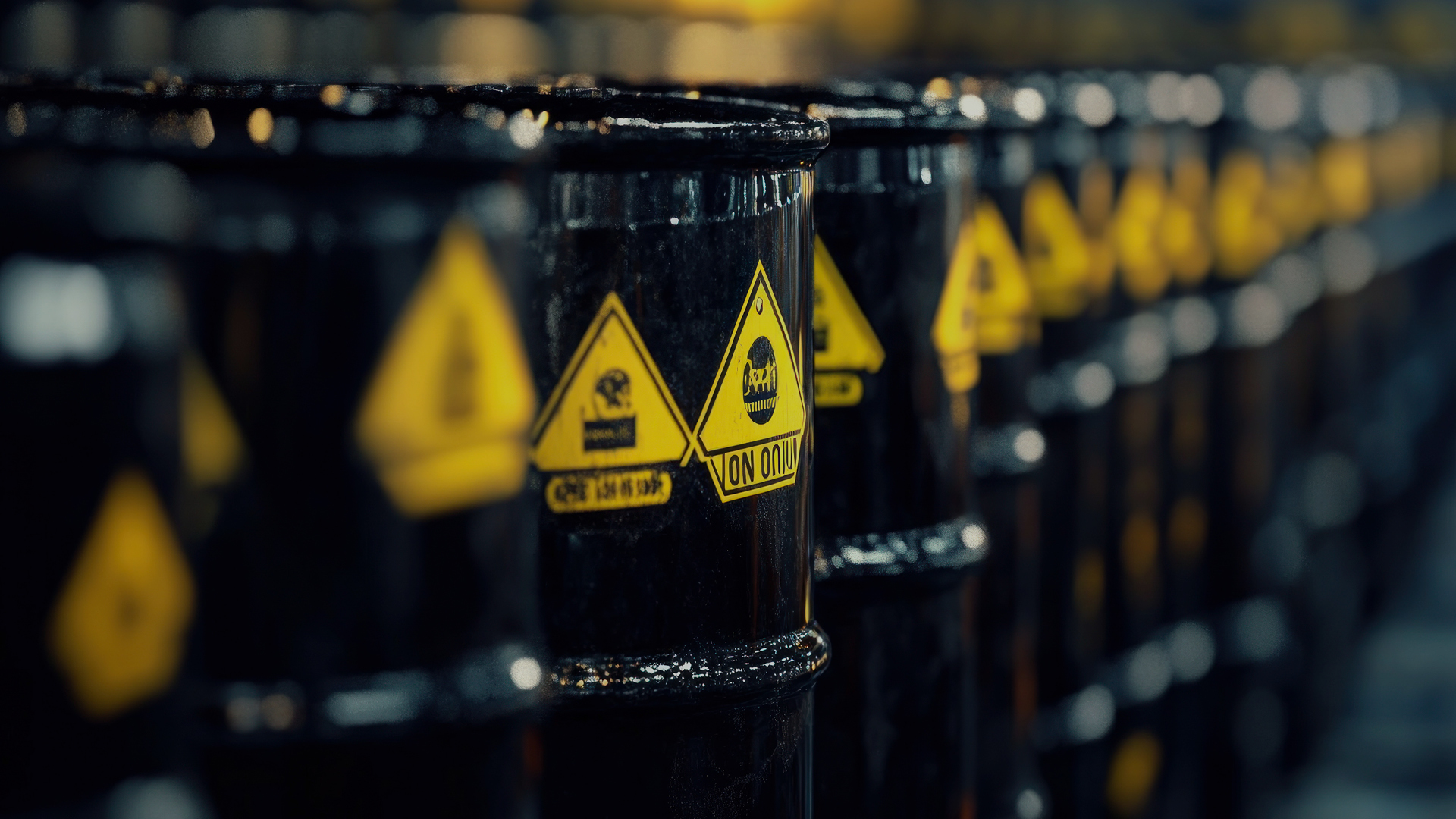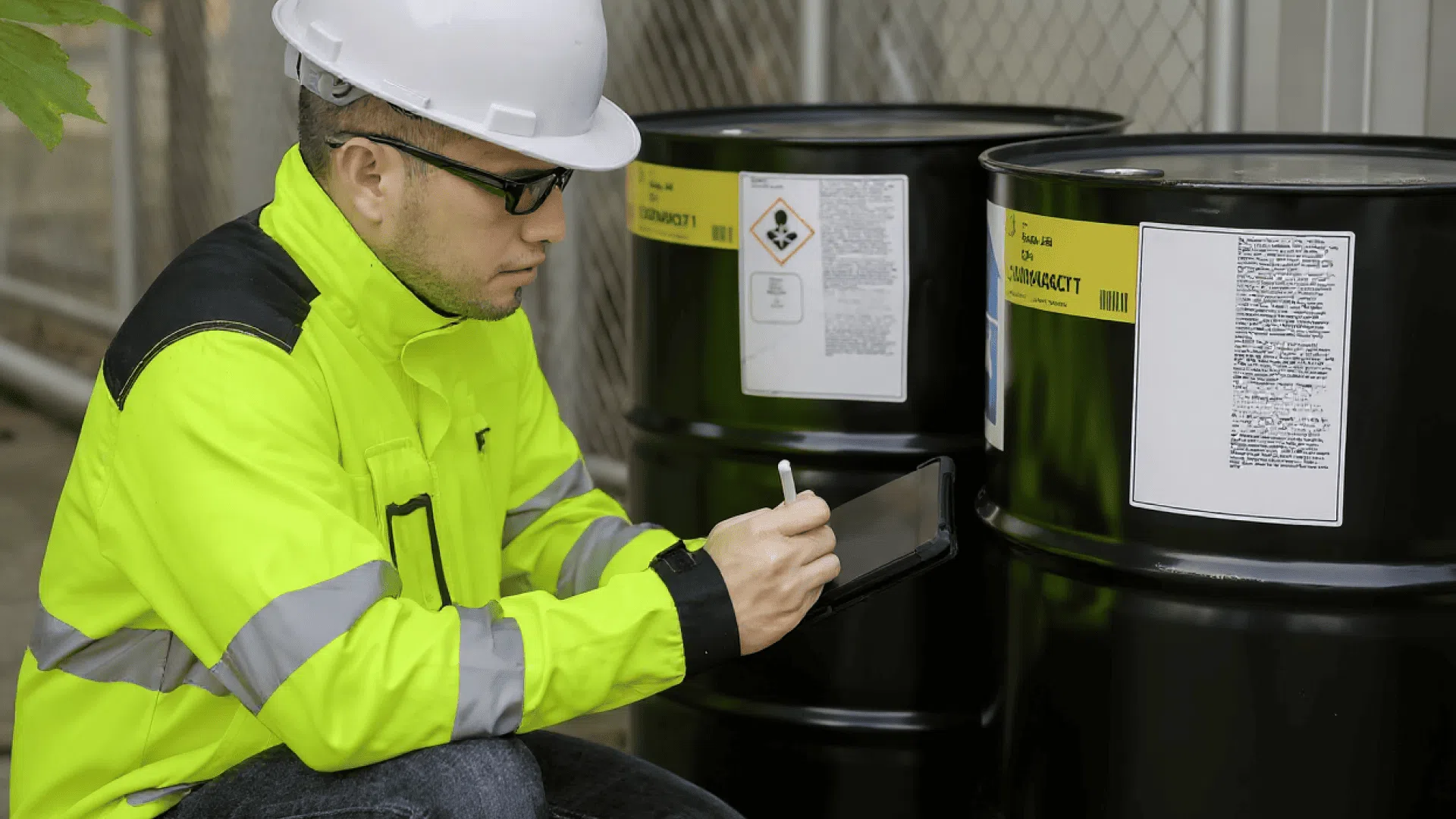Meeting hazardous materials regulations and securing your processes – made easier with ERP

Hazardous substance management involves all the measures needed to ensure safe, compliant, and efficient handling of hazardous substances within a company. This includes identifying and classifying dangerous materials, implementing protective measures, providing regular employee training, and updating safety-related information—such as safety data sheets or operating instructions.
Effective hazardous substance management not only ensures compliance with legal requirements but also protects employees, simplifies processes, and enhances overall safety in the company.
The key goal of hazardous substance management is to ensure the safe handling of health- and environmentally hazardous substances in daily operations, thereby protecting people, the environment, and facilities.
A structured hazardous substance management approach is crucial to:
Hazardous substance management in companies is clearly regulated by law. Both national and European regulations dictate how to handle hazardous substances with the aim of protecting employees, the environment, and the organization.
These laws impose specific obligations on companies, including:
These obligations apply regardless of whether companies manufacture, process, or merely store hazardous substances.
The Occupational Safety and Health Act requires employers to conduct a risk assessment. Section 5 stipulates that all workplace hazards, including those from hazardous substances, must be systematically identified and minimized.
The Hazardous Substances Ordinance specifies requirements for handling dangerous substances. It prescribes, among other things:
The REACH Regulation governs the registration, evaluation, authorization, and restriction of chemicals at the EU level. For companies, this means they must determine if substances require registration and fulfill any reporting obligations.
The CLP Regulation covers the classification, labeling, and packaging of chemicals according to the globally harmonized system (GHS). It defines the hazard symbols, signal words, and pictograms required on packaging.
The Biocidal Products Regulation manages the market placement and use of biocidal products, such as disinfectants. Often, specific approvals and safety measures are required here.
In Germany, a hazardous substance officer is not legally required, but in practice, it is advisable, especially with high volumes of chemicals or increased potential dangers.
If no officer is appointed, the responsibility falls to the employer or a qualified individual (e.g., a safety specialist).
In modern companies, many of these tasks are digitally supported, for example, with the Yaveon ERP solution, which makes handling hazardous substances more efficient.
Hazardous substance management is more than just documentation. It is a structured process that covers everything from procurement to disposal. This process systematically helps meet legal requirements and ensures safety in the workplace.
The hazardous substance management process step by step:
Tip: Many of these process steps can be digitally mapped using modern ERP solutions like Yaveon 365.
In addition to the process, there are key components that every company must have:
The registry lists all hazardous substances in the facility, including their properties, areas of use, and quantities. It serves as a central directory for operational hazardous substance monitoring.
According to Section 12 of the Hazardous Substances Ordinance, it must include at least the following information:
They contain all relevant safety information about a hazardous substance, including:
SDSs form the basis for registries, operating instructions, and training sessions.
They summarize the most important information for handling a specific hazardous substance on one to two pages:
Protective equipment safeguards employees from health risks when handling hazardous substances. This includes:
The selection of PPE depends on the type and risk of the particular substance.
Every hazardous substance must be clearly labeled with hazard symbols, signal words, and safety instructions. The CLP Regulation provides the legal framework for this. This allows employees to quickly recognize the substance they are working with.
Hazardous substances must be properly stored and disposed of with a focus on health protection, environmental compatibility, and orderliness. Possible storage solutions include:
Disposal must also be documented and carried out in compliance with regulations.
Employees must receive regular training, such as on:
Training sessions are legally required and must be documented, ideally supported digitally by software.
The terms hazardous substance and dangerous goods are often used interchangeably, but they mean different things:
Example: A highly flammable substance is considered a hazardous substance while stored in a warehouse. Once it is shipped, it becomes a dangerous good and is subject to dangerous goods regulations.
Hence, it is important to monitor both areas and ideally manage them in an integrated manner.
Modern ERP solutions like Yaveon 365 can assist in this: They centrally and compliantly record information on both hazardous substances and dangerous goods.
Hazardous substance management in many companies is still associated with manual efforts: Excel lists, folders, paper-based instructions. Suitable software not only provides an overview but also saves time and ensures compliance with legal requirements.
These are some features of ERP-supported hazardous substance management:
 How to manage hazardous materials safely – Beitrag öffnen
How to manage hazardous materials safely – Beitrag öffnen
Meeting hazardous materials regulations and securing your processes – made easier with ERP
 How to manage hazardous substances safely – Beitrag öffnen
How to manage hazardous substances safely – Beitrag öffnen
How modern ERP systems make hazardous substance management efficient and easy to handle.
 Recipes & characteristics in chemical production – Beitrag öffnen
Recipes & characteristics in chemical production – Beitrag öffnen
Future-proof chemical production: precise recipes, controlled characteristics, version control, and seamless lot tracking.